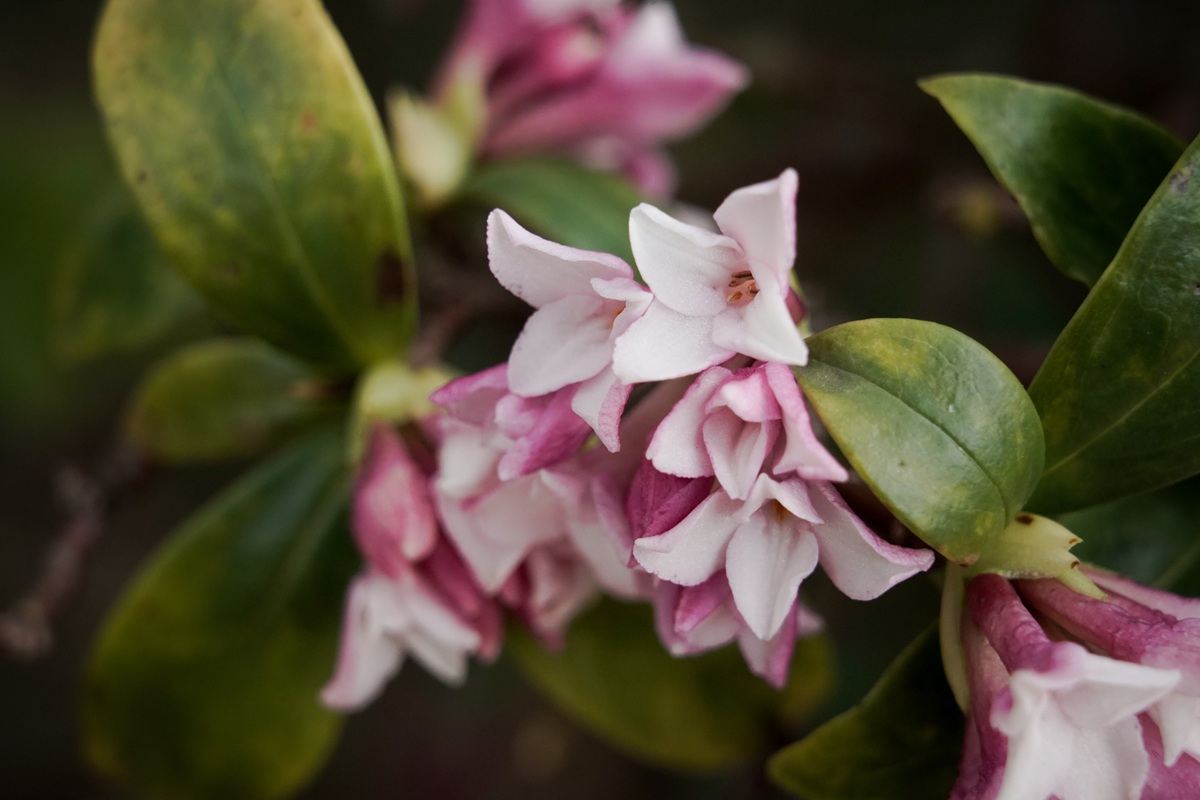When winter blankets our outdoor spaces in silence and slumber, some plants remain awake to offer us an unexpected spectacle. Have you heard of the Daphne odora? Often absent from French gardens, this remarkable shrub truly deserves special attention. Do you dream of a fragrant garden even in the depths of winter? Here’s why this shrub could become your best ally.
Discovering the Daphne Odora: A Rare Shrub with Multiple Assets
Native to Asian regions like China and Japan, this small shrub belongs to the Thymelaeaceae family. Its appearance resembles that of laurel, and it’s no coincidence: its name refers to the Greek myth of the nymph Daphne, who was transformed into a laurel tree to escape Apollo.
With a slow growth rate and a limited height (generally between 1 and 1.5 meters), it makes for a wise choice to subtly structure a garden bed or serve as a natural focal point in a country garden.
Its foliage is also worth noting: evergreen and glossy dark green, it can sometimes be found in varieties with yellow or cream margins. A definite plus for brightening up your garden even in the absence of flowers!
Important Information: Attention to Its Toxic Side
However, a note of caution: be aware that all parts of this shrub are toxic if consumed. Protect your children and pets by carefully selecting its location.
Wear gloves when handling the shrub, as its sap can cause irritation.
A Unique Fragrance, Discreet Flowers Yet Remarkable
The real charm of the Daphne odora undoubtedly lies in its winter flowering. Between January and March, when everything seems frozen, it adorns itself with small star-shaped white-pink flowers grouped in elegant clusters.
Be careful, don’t underestimate the modest appearance of its flowers! They emit an intense, sweet, and lemony fragrance capable of generously permeating the surrounding air.
Looking to naturally scent your interior? A few picked branches will suffice to diffuse a pleasant aroma throughout the room.
Our Practical Advice for Successful Cultivation of the Daphne Odora
The Right Conditions for Optimal Flowering
Are you tempted by the idea of welcoming this lovely shrub into your garden? A few precautions need to be taken regarding the choice of location and ideal conditions:
- Choose a spot in your garden that is partially shaded or lightly sheltered from icy winds.
- Opt for well-drained soil, rich in organic matter, with a neutral to slightly acidic pH (between 6 and 7).
- Ideally, plant in autumn to get a head start on rooting before summer.
The Essential Actions for Planting and Care
Once well established, this beautiful shrub requires minimal additional care:
- In the first year, provide moderate but regular watering. After that, only during dry periods will your intervention be needed.
- Avoid pruning, except to remove any dried or damaged branches.
- A moderate application of compost each spring will ensure a generous and fragrant flowering.
A unique detail to note: once planted, it does not take well to being moved. So, choose its final location in your garden carefully.
A True Fighter Against the Cold, Resistant Down to -15°C
You might doubt its cold resistance due to its Asian origins? Think again!
This shrub possesses surprising robustness as it survives temperatures as low as -15°C without issue. A fantastic piece of news for your gardens exposed to harsh winters.
In the event of severe frost during flowering, only a few flowers may be affected: the shrub itself will remain unharmed! Thus, it’s an ideal choice, worry-free.
3 Must-Have Varieties of Daphne Odora to Enhance Your Garden
Still unsure which specific variety to choose? Here’s a brief selection to guide your choice:
- Daphne odora Aureomarginata: foliage edged in gold, very fragrant pink and white flowers, ideal in lightly shaded spots.
- Daphne odora Leucanthe: completely white, intensely fragrant flowers, with bright light green foliage, perfect for shadier corners.
- Daphne odora Rubra: deeper pink-red flowers that create a beautiful contrast with dark green foliage. Its blooming is often early.
Where to Ideally Place Your Daphne Odora in the Garden?
To maximize the effect of its enchanting fragrance, choose strategic locations:
- Right next to an entrance or a frequently used path, you’ll enjoy its delightful fragrance as you step outside.
- Place it under a window or near a terrace, allowing this subtle aroma to waft into your home.
In terms of composition, pair it with winter or spring flowering plants like hellebores, daffodils, cyclamens, or ferns for an enjoyable contrast and mutual enhancement.
We would love to hear your experience! Did you already know about this shrub before reading this article? Are you planning to plant one in your garden soon? Don’t hesitate to share your tips or questions in the comments. The floor is yours!
I’m a disabled, xennial Christ-follower, slightly off kilter (but aren’t all “ar-teeests”?).
Hope you enjoy my rantings, don’t take my sarcasm too seriously and know that comments are welcome. 🙂


Leave a Reply